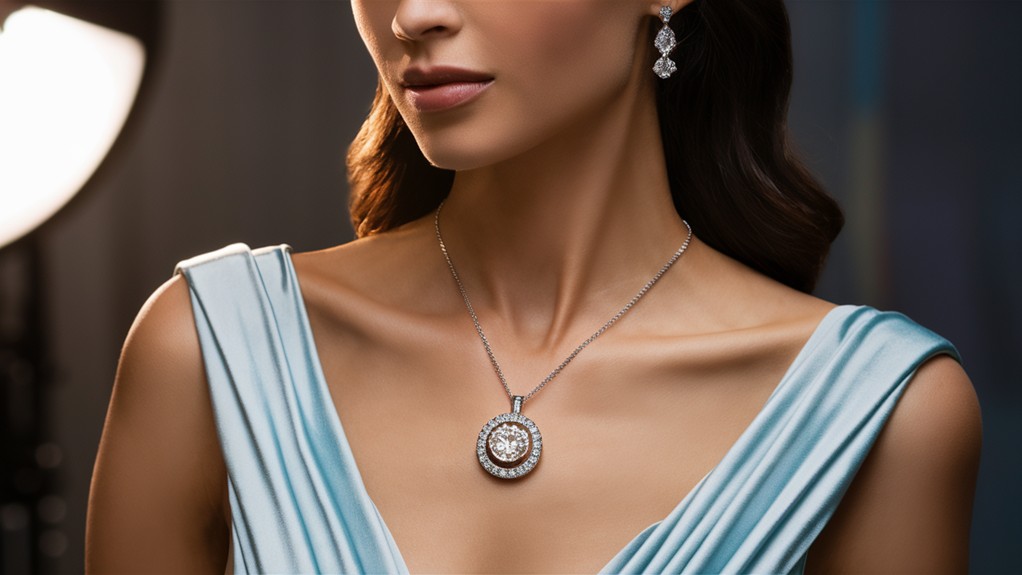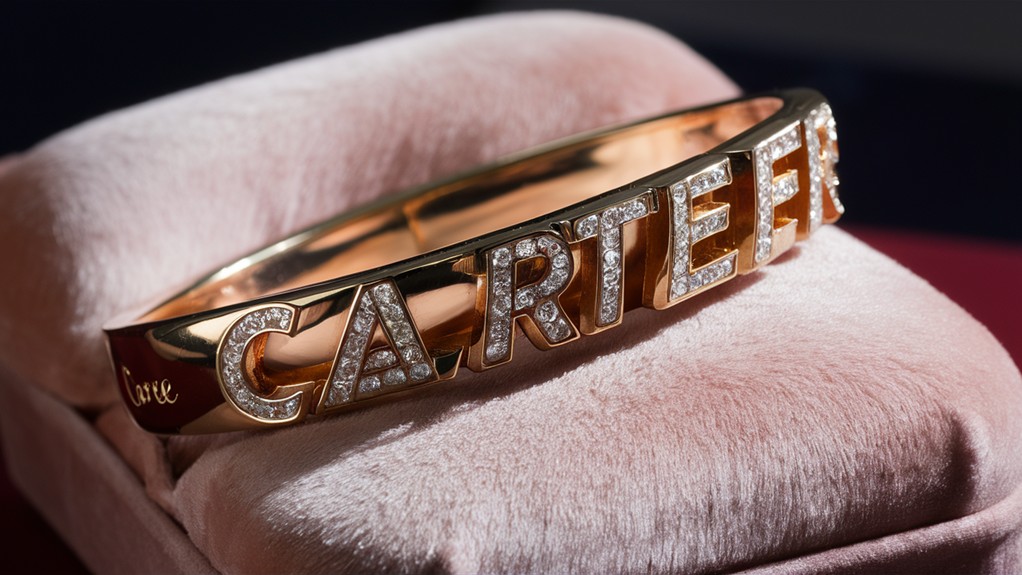You're probably familiar with popular diamond cuts like round brilliant and princess, but there's a world of rare and unique gemstone cutting styles that can enhance your jewelry game. Imagine owning a one-of-a-kind diamond that's been precision-cut to optimize light reflection and brilliance. From the intricate Asprey Cut to the elegant Royal Asscher Cut, rare diamond cuts offer a level of sophistication and individuality that's hard to find in more traditional cuts. But what sets these rare cuts apart, and how do you choose the perfect one for your taste and style that can amplify your overall aesthetic?
Our Highlighted Points
- The Asprey Cut features 61 aspects for spectacular light reflection, making it a unique and exotic diamond cut.
- The Eighty-Eight Cut has an octagonal shape with 88 aspects for bright sparkle even under low-light conditions.
- The Royal Asscher Cut boasts 74 aspects for added brilliance and perfect symmetry, ideal for statement pieces.
- Modified cuts combine elements of different cuts, creating unique looks that showcase a gemstone's features and characteristics.
- Unique cuts like the Scissor cut and Laser cut use specialized techniques to refract light and add visual interest to gemstones.
Understanding Gem Cutting Basics
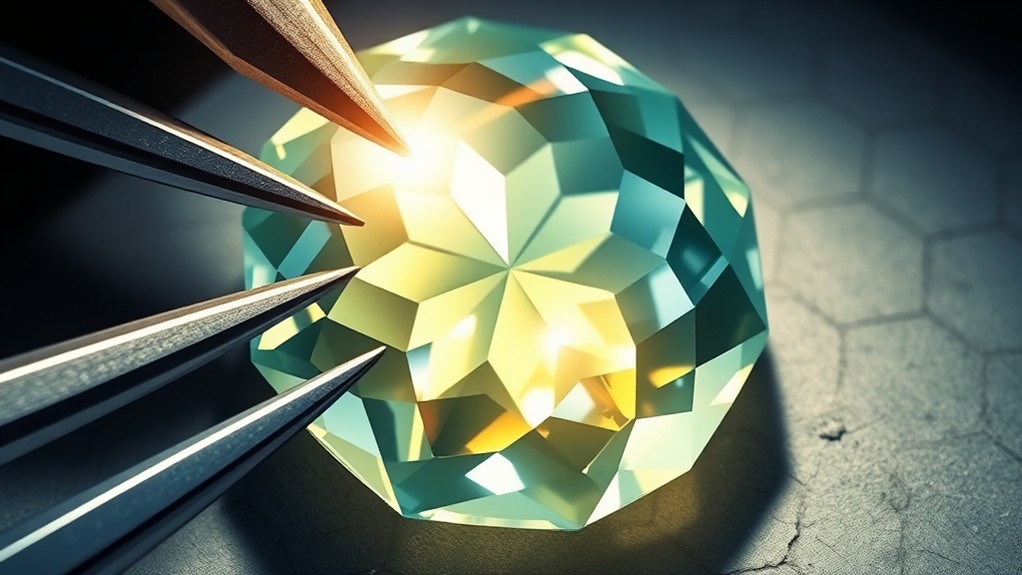
Into the world of gem cutting, you step with an array of styles and techniques at your disposal.
To grasp the basics of gem cutting, you must comprehend the three fundamental styles: brilliant, step, and mixed. These styles refer to the shape and arrangement of aspects, which can be combined to create diverse gem designs.
The basic cutting styles can be combined with almost any shape, giving faceters flexibility to modify brilliant, step, and rose cuts.
For instance, brilliant cuts consist of triangular and kite-shaped aspects that spread outward from the center of the gem, maximizing scintillation. Step cuts, in contrast, feature rectangular aspects that ascend the crown and descend the pavilion in steps, showcasing the stone's color and clarity.
Some key styles to ponder:
- Brilliant cuts: triangular and kite-shaped aspects for maximum scintillation
- Step cuts: rectangular aspects for a subtle gleam
- Rose cuts: round, cabbed flat base and faceted top for opaque or translucent stones
Exploring Brilliant and Step Cuts
Stepping up the game in gemstone cutting, you'll find two fundamental styles that have gained widespread popularity – brilliant and step cuts. Brilliant cuts are known for their triangular and kite-shaped aspects that spread outward from the center of the gem, giving off the most scintillation of any cut. This style is often used for round and oval shapes. Conversely, step cuts consist of rectangular facets that ascend the crown and descend the pavilion in steps, showing off the stone's color and clarity and producing a subtle gleam. This style is often used for emerald and Asscher shapes.
Brilliant and Step Cuts: Key Characteristics
| Cut Style | Aspect Shape | Scintillation | Typical Shapes |
|---|---|---|---|
| Brilliant | Triangular, Kite | High | Round, Oval |
| Step | Rectangular | Low | Emerald, Asscher |
| Ceylon | Triangular, Rectangular | Medium | Emerald, Asscher |
| Barion | Triangular, Kite | High | Fancy Shapes |
Mixed Cuts and Their Variations
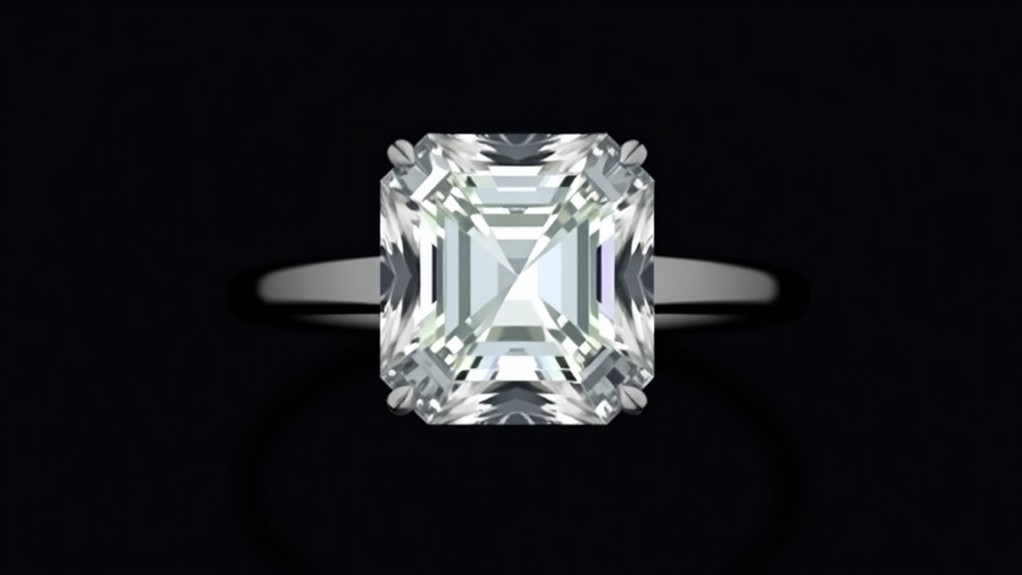
Mixed cuts bring a unique twist to the world of gemstone cutting, and you're likely to find some truly one-of-a-kind designs.
These cutting styles combine elements of different cuts to create a unique look that showcases a gemstone's features. For instance, the Ceylon cut pairs a step-cut pavilion with a brilliant-cut crown, resulting in a mixed cut that highlights the gemstone's color and clarity.
Some notable examples of mixed cuts include:
- The Barion cut, which combines a round brilliant pavilion with a fancy-shaped gem, offering a one-of-a-kind design that optimizes the use of rough material.
- Modified brilliant cuts, such as the Eighty-Eight cut, that combine the traditional round brilliant cut with other shapes to create a unique mixed cut that showcases the gemstone's sparkle and fire.
- The Crisscut, which features 77 aspects, resulting in a more brilliant and fiery appearance than the traditional Emerald Cut.
These mixed cuts demonstrate the versatility and creativity of gem cutting, offering you a wide range of options when searching for a unique and stunning brilliant diamond.
Modified and Cabochon Cuts
Your search for a truly one-of-a-kind diamond cut leads you to modified and cabochon cuts, offering unique alternatives to traditional cuts.
Modified cuts are variations of well-known gem cuts, often featuring unique aspects that refract light in distinct ways.
These cuts can offer more light reflection than traditional cuts, making them a popular choice for those seeking a custom look.
A cabochon cut, typically used for softer gemstones, features a smooth, curved base and a multi-angled crown.
This cut type showcases the gem's natural colors and patterns.
In contrast, a concave cut features a curved, inward-facing shape, often used in combination with multi-angled gems.
This cut type offers a unique, sculptural appearance.
Modified cuts can be further divided into several subcategories, including:
- Brilliant cutting, featuring a combination of multi-angled and curved surfaces
- Cutting and polishing techniques, used to create unique light effects
- Gem cuts featuring a combination of concave and multi-angled surfaces
When choosing a modified or cabochon cut, consider the gemstone's natural characteristics and the desired appearance.
Each cut type offers distinct advantages and challenges, making it vital to select a cut that complements the gemstone's unique features.
Named Cuts and Techniques

Named cuts and techniques offer an exciting new frontier in diamond cutting, where creativity meets precision.
These unique styles challenge the traditional round brilliant cut, emerald cut, and cushion cut gemstone, pushing the boundaries of what's possible in diamond cuts. The princess cut, for example, features a multi-angled top and angular arrangements of aspects, giving it a distinctive appearance.
Several named cuts have gained popularity in recent years, including:
- The checkerboard cut, which features square elements that create a play of color effect when illuminated, making it ideal for translucent stones.
- The divine cut, a round cutting style that allegedly gives a gem more sparkle, a higher perceived color grade, and a larger face-up appearance than round brilliants.
- The Portuguese cut, which has several tiers of sides, creating a wonderful display of light and more scintillation than almost any other cut.
- Fantasy cuts, a style of angular cutting that uses large pavilion elements and simple grooves to create a unique appearance.
These named cuts and techniques showcase the artistry and innovation that's possible in the cutting process, offering you a wider range of options when selecting a unique gemstone cut.
Gem Cutting Innovations and Resources
Advancements in gem cutting technologies have substantially improved the precision and efficiency of the cutting process, allowing for more intricate and innovative designs.
Consequently, you have access to a wide range of gem cutting innovations that can augment the beauty and value of your gemstones.
In the world of gemstone cutting, the cut is often used to describe the proportions, symmetry, and polish of a gemstone.
With modern technologies, cutters can now create unique and complex designs, such as step-cut pavilions, cabochon cuts with domed crowns, and cropped corners that feature triangular and kite-shaped aspects.
Some key considerations for achieving a finished gem include:
- Understanding the gemstone's properties: The cutter must have a deep understanding of the gemstone's characteristics, including its hardness, cleavage, and optical properties.
- Selecting the right cutting style: The cutter must choose a cutting style that complements the gemstone's properties and accentuates its natural beauty.
- Using precision cutting techniques: The cutter must use precision cutting techniques to guarantee that the gemstone is cut accurately and efficiently.
- Polishing and finishing the gem: The cutter must carefully polish and finish the gemstone to bring out its full brilliance and fire.
Classic Gemstone Cuts and Shapes

While modern gem cutting technologies have greatly expanded the possibilities for unique and intricate designs, many classic gemstone cuts and shapes continue to be revered for their timeless elegance and sophistication.
In terms of traditional gemstone shapes, you'll often come across familiar forms like the oval cut, which is a variation of the traditional round shape.
The emerald cut, with its rectangular shape and step-cut beveling, is another classic style that has been sought after for centuries.
Fine step-cut gemstones, known as antique cut gemstones, feature simple forms and straight grid-like lines, giving them a unique charm.
Other classic gemstone cuts and shapes include:
- Asscher cut: a stunning, antique-style gemstone with a square shape and stepped beveling.
- Emerald cut: a classic style with a smooth, rectangular shape, prized for its ability to bring out luster and color in the stone.
These traditional gemstone cuts and shapes continue to be popular among gemstone enthusiasts and collectors, offering a timeless alternative to more modern and innovative designs.
Unique and Custom Gemstone Cuts
For those seeking something truly distinctive, unique and custom gemstone cuts offer an exciting alternative to traditional shapes and styles.
These cuts can accentuate the beauty of a gem, creating a truly one-of-a-kind piece. By experimenting with different aspects, shapes, and colors, you can create a truly unique gemstone that reflects your personal style.
Some of the unique types of cuts you can consider include:
- Scissor cuts: Known for their unique angles that refract light in a way that creates an eye-catching sparkle.
- Checkered cut: Shaped and polished using a unique technique involving a checkerboard pattern, adding an extra layer of visual interest to the gemstone.
- Laser cut: Uses a high-powered beam of light to precisely cut into the stone at multiple angles, providing a higher quality of finish than traditional cutting methods.
- Fantasy cut: A style of shaping that uses large pavilion facets and simple grooves, resulting in a mesmerizing display of light and color.
These unique cuts can add brilliance, scintillation, and color to a gemstone, making it truly special.
With the guidance of a skilled designer or cutter, you can create a custom gemstone that reflects your personal style and vision. A skilled designer or cutter can help you select the perfect gemstone, whether it’s a stunning diamond, a vibrant emerald, or a brilliant sapphire, and then work with you to bring your custom design to life. They can also offer professional clean and polish tips to help maintain the beauty and brilliance of your new gemstone for years to come. With their expertise, you can be confident that your custom gemstone will be a true reflection of your individuality and taste.
Rare and Exotic Diamond Cuts
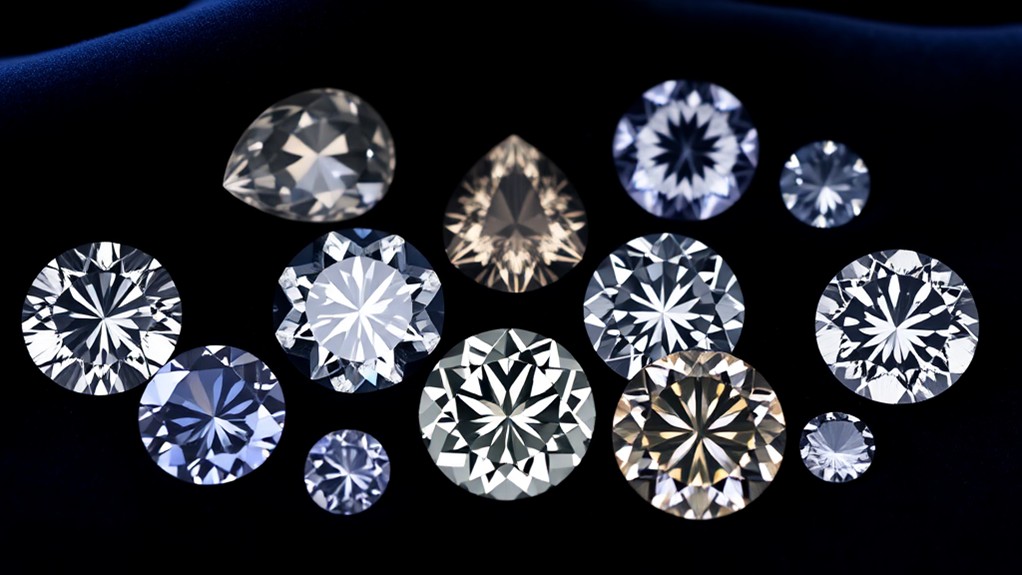
Rare diamond cuts can augment your jewelry to a new level of sophistication and luxury, especially when you're looking for something beyond the standard round brilliant or emerald cut.
If you're seeking a unique and exotic diamond cut, consider the following options.
These rare diamond cuts boast unique shapes and aspects that refract light, resulting in exceptional brilliance and fire.
The Asprey Cut, for instance, features 61 aspects for spectacular light reflection, while the Eighty-Eight Cut has an octagonal shape with 88 aspects for bright sparkle even under low-light conditions.
The Royal Asscher Cut, meanwhile, boasts 74 aspects for added brilliance and perfect symmetry.
These exotic diamond cuts are ideal for those looking for a one-of-a-kind engagement ring or statement piece.
Gem cutters carefully craft these unique diamond cuts to optimize their ability to reflect light.
Popular among collectors, these rare diamond cuts are a tribute to the artistry and skill of gem cutters.
Frequently Asked Questions
Which Diamond Cut Is Most Rare?
You're searching for the rarest diamond cut, and the answer is the Asprey Cut, designed by Gabi Tolkowsky. It's extremely limited, with only a few stones cut in this style each year, making it super exclusive and hard to find.
What Is the Most Difficult Diamond Shape to Cut?
When considering cutting diamonds, you'll find that some shapes are tougher to achieve than others. The Royal Asscher Cut stands out as the most difficult, requiring great skill and expertise owing to its precise symmetry and 74 aspects.
What Is the Hardest Gem Shape to Cut?
When you're considering the hardest gem shape to cut, you'll find that multiple aspects contribute to the challenge. It often depends on the gemstone, desired shape, and cutting requirements, requiring great skill and precision from you.
How Many Different Gemstone Cuts Are There?
You're probably wondering how many different gemstone cuts there are. With new designs emerging, there are over 100 recognized cuts, and this number keeps growing as gem enthusiasts drive innovation and create unique styles.

